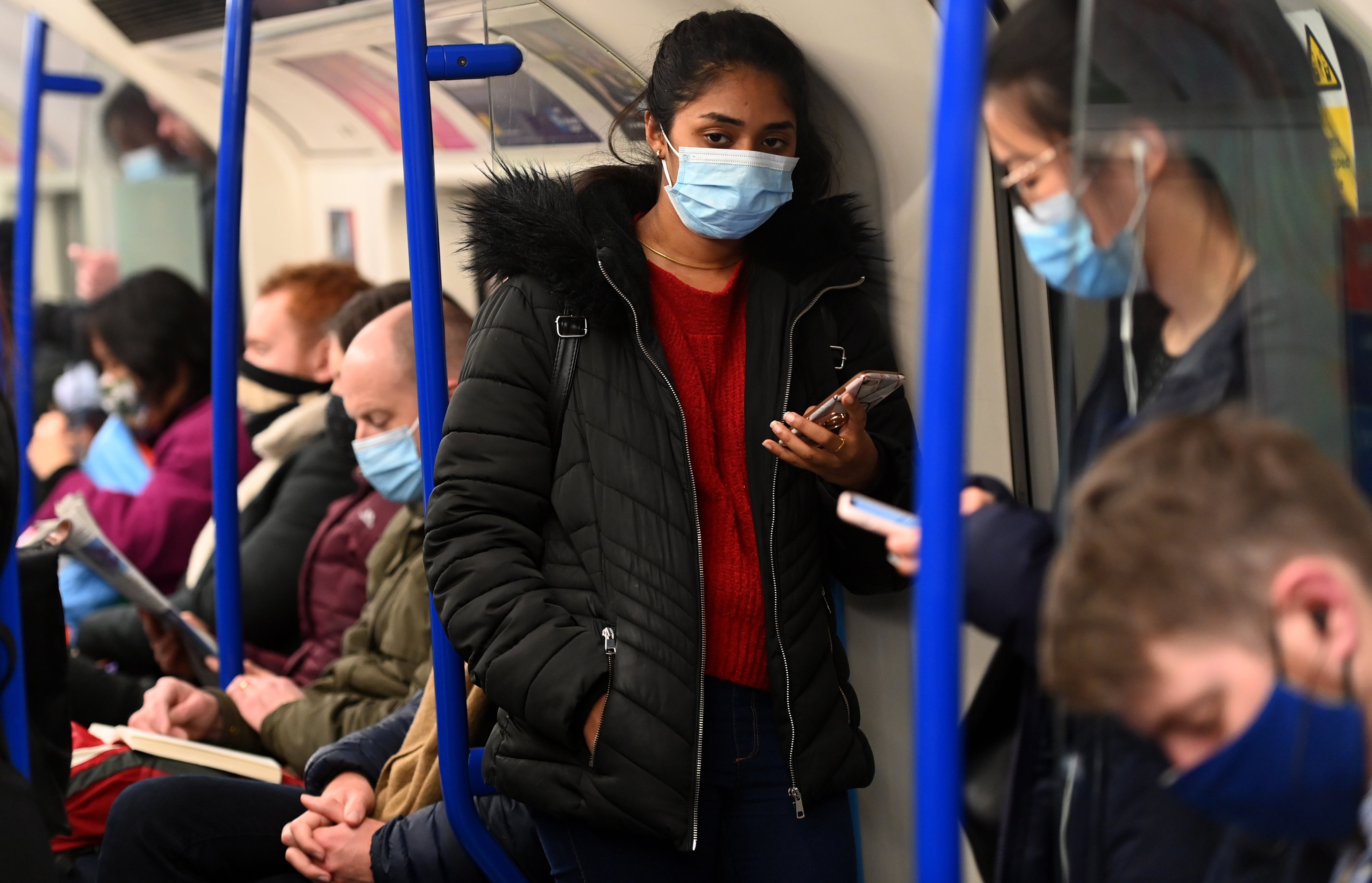Covid: Do you still need to wear a face mask?
Requirement to wear coverings in certain spaces dropped as part of government’s ‘Living with Covid’ strategy but increasingly advisable as cases rise

Your support helps us to tell the story
From reproductive rights to climate change to Big Tech, The Independent is on the ground when the story is developing. Whether it's investigating the financials of Elon Musk's pro-Trump PAC or producing our latest documentary, 'The A Word', which shines a light on the American women fighting for reproductive rights, we know how important it is to parse out the facts from the messaging.
At such a critical moment in US history, we need reporters on the ground. Your donation allows us to keep sending journalists to speak to both sides of the story.
The Independent is trusted by Americans across the entire political spectrum. And unlike many other quality news outlets, we choose not to lock Americans out of our reporting and analysis with paywalls. We believe quality journalism should be available to everyone, paid for by those who can afford it.
Your support makes all the difference.Boris Johnson ended the UK government’s “Plan B” social restrictions for dealing with the Omicron variant of the coronavirus in England on 24 February 2022, apparently drawing a line under the lockdown era once and for all.
Trailing the decision in the House of Commons in January, the prime minister said that working from home orders, guidance on mask-wearing in public places and presenting NHS Covid passes to enter crowded venues were all to be scrapped as the New Year rise in infections waned without resulting in the wave of mass hospitalisations feared by experts.
Life has largely returned to normal interim, with the national focus switched to Partygate, the war in Ukraine and the cost of living crisis.
However, a recent rise in UK hospital admissions for patients with Covid-19 prompted experts to warn that Britain was in the midst of a fifth wave of coronavirus infections being driven by the BA.4 and BA.5 sub-variants of Omicron.
The country saw a 43 per cent spike in cases at the beginning of June, seemingly caused by people coming together to celebrate the Queen’s Platinum Jubilee over the course of a four-day weekend, and the infection rate climbed steadily from there to peak at around 4.6m cases in mid-July before gradually beginning to decline.
While August finds Britain in a much better place in terms of infections, closer to just 120,000 per day according to the ZOE Health Study, the recent spike was a timely reminder that the coronavirus has not gone away and that we still need to be vigilant as mutations continue to emerge around the world.
It is by no means impossible that new measures could eventually become necessary to rein in transmission once again, perhaps the return of face masks and social distancing in public spaces or even the rollout of second vaccine booster jabs.
For now though, the rule on face coverings remains that they are not officially required in places and a matter of individual choice.
That said, they are clearly advisable if you are in a crowded indoor space or on public transport given the current high rate of tranmission – and especially so if you have a prior health condition.
If you believe you have symptoms associated with the coronavirus, the current NHS advice is to take a lateral flow test and isolate at home for five days if you test positive to avoid passing it on to others (you should keep away from anyone likely to be particularly vulnerable because of their age or a pre-existing condition for 10 days).
If you do have to go out in public when you are unwell, you are encouraged to wear a mask, avoid crowded indoor spaces and wash your hands for at least 20 seconds.
If you are concerned about your symptoms or believe they are getting worse, you are advised to visit 111.nhs.uk, call 111 or call your local GP surgery.



Join our commenting forum
Join thought-provoking conversations, follow other Independent readers and see their replies
Comments